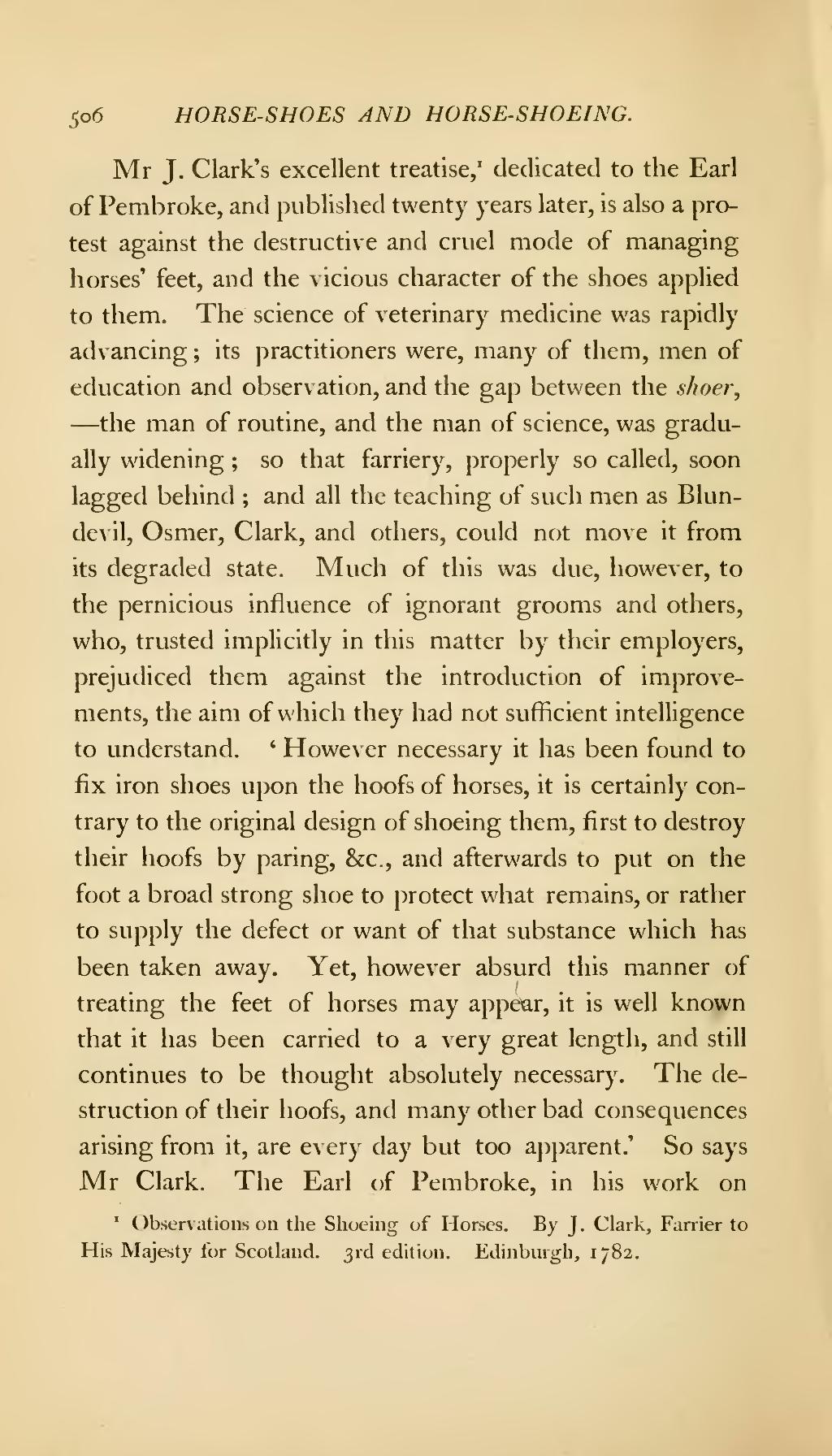Mr J. Clark's excellent treatise,[1] dedicated to the Earl of Pembroke, and published twenty years later, is also a protest against the destructive and cruel mode of managing horses' feet, and the vicious character of the shoes applied to them. The science of veterinary medicine was rapidly advancing; its practitioners were, many of them, men of education and observation, and the gap between the shoer,—the man of routine, and the man of science, was gradually widening; so that farriery, properly so called, soon lagged behind; and all the teaching of such men as Blundevil, Osmer, Clark, and others, could not move it from its degraded state. Much of this was due, however, to the pernicious influence of ignorant grooms and others, who, trusted implicitly in this matter by their employers, prejudiced them against the introduction of improvements, the aim of which they had not sufficient intelligence to understand. 'However necessary it has been found to fix iron shoes upon the hoofs of horses, it is certainly contrary to the original design of shoeing them, first to destroy their hoofs by paring, &c., and afterwards to put on the foot a broad strong shoe to protect what remains, or rather to supply the defect or want of that substance which has been taken away. Yet, however absurd this manner of treating the feet of horses may appear, it is well known that it has been carried to a very great length, and still continues to be thought absolutely necessary. The destruction of their hoofs, and many other bad consequences arising from it, are every day but too apparent.' So says Mr Clark. The Earl of Pembroke, in his work on
- ↑ Observations on the Shoeing of Horses. By J. Clark, Farrier to His Majesty for Scotland. 3rd edition. Edinburgh, 1782.
